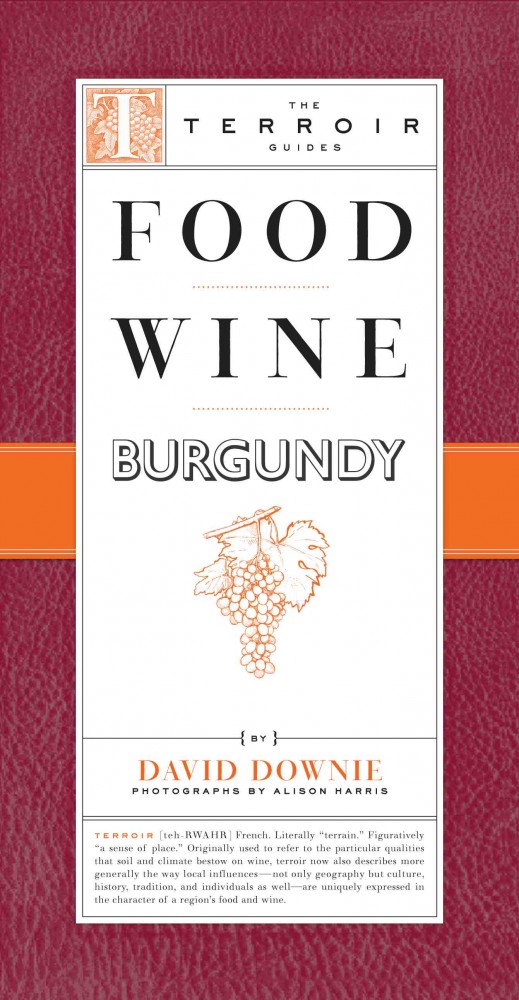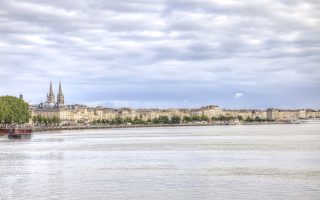Food Wine Burgundy

For years now, The Little Bookroom has been publishing out-of-the-ordinary travel guides—books that encourage travelers to slow down, to appreciate details, to focus in a thoughtful way on what makes each destination unique. The publisher’s new series, the Terroir Guides, applies these concepts to food and wine, focusing not on an entire country, but on specific regions or cities. The result is a real celebration of the sense of place, and the first volume on France, David Downie’s Food Wine Burgundy, proves that the concept works beautifully.
Downie, who writes on culture, food and travel for many publications and has published travel books and cookbooks on France and Italy, describes himself as a “benign curmudgeon” who “scours … France and Italy in search of the authentic and unadulterated.” In the book’s opening pages, he defines what he searched for in his journeys through Burgundy: “It’s worth noting that this guidebook wherever possible lists restaurants whose chefs still work from scratch, using fresh, locally sourced, high-quality ingredients, serving traditional or updated regional fare and cuisine bourgeoise that captures the spirit—if not always the letter—of terroir.”
What follows is a feast of hearty Burgundian food and luscious wines, starting with a section on local specialties. In his descriptions of such traditional treats as snails, boeuf bourguignon, charcuterie, cheese, coq au vin, mustard and gingerbread, Downie takes us behind the scenes, stripping away myths and clichés and showing unexpected aspects of this “heartland of ancient Gaul”. We learn that most snails now come from Turkey, Greece and the Balkans, that Charolais beef was “among the first foods to earn France’s Label Rouge (red label) for flavor,” that Burgundy “boasts France’s largest concentration of goats”—hence the excellent chèvre cheese—and that the region has its own variety of truffle, the dark brown Tuber uncinatum, whose “nutty, sweet flavor,” more subtle than the black melanosporum, comes at one-third the price. The wine section is twice as long, covering grape varieties, the making of Burgundy wine, winery etiquette, wine routes, and organic and biodynamic wines; there’s also information on the Chevaliers du Tastevin and the Saint-Vincent-Tournante wine festival.
Downie divides Burgundy into five sections, one for each of its four departments—Yonne, Côte d’Or, Saône et Loire and Nièvre—and another for central Burgundy, including the mountainous, sparsely populated area called the Morvan. Within each division, places are listed alphabetically, with a brief description and sightseeing highlights (including addresses, hours and websites), followed by the main event-places to eat, drink and buy regional specialties.
Although he lists plenty of highly touted, pricey places, Downie’s passion lies in promoting the smaller, more easily overlooked gems hidden throughout the region. And when well-known places don’t meet his standards, he doesn’t waste much space on them. Describing the famous 1845 Maille mustard boutique in downtown Dijon, he admits that it’s “a feast for the eyes,” but adds that “the mustard is made from imported seed; there’s nothing artisanal involved.” Even Michelin-starred restaurants gets short shrift if they’re not serving regional cuisine: Dijon’s one-star Hostellerie du Chapeau Rouge rates only two short sentences, since it “serves outspokenly anti-terroir cuisine, excellent in its fusion genre…”
The book is packed with insider’s addresses, including small, family-run bistrots, country inns, cheese shops and bakeries that seldom make it into other guidebooks. And the descriptions, often enlivened by Downie’s wry sense of humor, are a delight to read.
Wine lovers will appreciate the invaluable information on wineries open to the public, especially those open without appointment; Downie also offers his opinion on each winery’s best offering. In addition to world-renowned labels, he lists establishments that offer some of the region’s most underrated and affordable wines. Each geographical section also has a clear, detailed map on orange-bordered pages for easy reference.
The volume is lavishly illustrated with Alison Harris’s gorgeous color photographs, but I was occasionally frustrated by the lack of captions. I also found the book’s compact format a bit awkward—shorter and narrower than a Michelin green guide, its bulk (461 pages) makes it hard to open fully, especially when reading map details in the center of the book.
But these are quibbles. I wish I’d had Downie’s guide with me on my past trips to Burgundy. And judging from the many margin marks, underlinings and stars that I penciled throughout the volume, it will certainly accompany me on the next.
Food Wine Burgundy, by David Downie. Photographs by Alison Harris. The Little Bookroom, March 2010. $29.95.
Share to: Facebook Twitter LinkedIn Email



